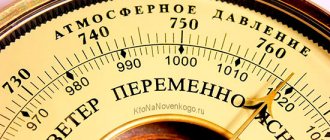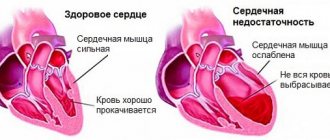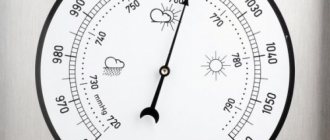Meteorology books often describe the Earth's atmosphere as a vast ocean of air in which we all live. Various diagrams depict our planet surrounded by a huge atmospheric sea several hundred kilometers high, divided into several different layers. But the layer of our atmosphere that supports all life is actually extremely thin—just over 5 km thick. The part of our atmosphere that can be measured with some degree of accuracy rises to about 40 kilometers. Moreover, it is almost impossible to give a precise answer about where the atmosphere ultimately ends; Somewhere between 400 and 500 km there is an undefined region where the air gradually thins and eventually dissolves into the vacuum of space.
So the layer of air surrounding our planet is not that big after all. As one famous meteorologist so eloquently put it: “The Earth is not suspended in a sea of air—it is suspended in a sea of space, and there is an extremely thin layer of gas on its surface.”
And this gas is our atmosphere.
If a person climbs a high mountain, such as Mauna Kea on the island of Hawaii, whose peak reaches 4206 meters above sea level, there is a high risk of suffering from altitude sickness (hypoxia). Before reaching the summit, visitors stop at an intermediate camp located at an altitude of 2804 m, where they must acclimatize to the altitude before continuing further up the mountain. “Well, of course,” you might say, “everyone knows that the amount of oxygen available at such high altitudes is significantly less compared to what is available at sea level.”
But in making such a statement, you are mistaken!
In fact, 21% of the Earth's atmosphere consists of life-giving oxygen (78% is nitrogen, and the remaining 1% is other gases). And this ratio in proportions is almost the same both at sea level and high in the mountains.
The big difference is not the amount of oxygen present, but rather its density and pressure.
Air is often compared to the ocean using the term "ocean of air", and this is true because we are all literally floating in the air. Now imagine this: a tall plastic bucket is filled to the brim with water. Now make a hole in the top of the bucket. The water will drain slowly. Now make another hole at the bottom near the bottom. What will happen? Water will rapidly flow out from the bottom hole in a strong stream. The reason is the difference in pressure. The pressure exerted by the weight of the water below at the bottom of the bucket is greater than at the top, so the water is “squeezed out” more strongly from the hole below.
Likewise, the pressure of all the air above us is the force that pushes air into our lungs, thereby delivering oxygen into the bloodstream. Once this pressure is reduced (for example, when we climb a high mountain), less air enters the lungs, therefore less oxygen reaches our bloodstream, resulting in hypoxia; again, not due to a decrease in the amount of available oxygen, but due to a decrease in atmospheric pressure.
What is atmospheric pressure?
Atmospheric pressure is the pressure of the gaseous shell of our planet, the atmosphere, which acts on all objects in it, as well as the earth's surface. Pressure corresponds to the force that acts in the atmosphere per unit area.
Earth's atmosphere (photo from the ISS)
In simpler terms, this is the force with which the air around us acts on the surface of the earth and objects. By monitoring changes in atmospheric pressure, it is possible, in conjunction with other factors, to predict weather conditions.
Test to consolidate learned material
Test on the topic: “Atmospheric pressure”
Sources:
- Tomilin A. N., Terebinskaya N. V. Why nothing? Essays. /L., “Det. lit.”, 1975.
- Ya. I. Perelman. Entertaining tasks and experiments. - M.: “Children's Literature”, 1972.
- Physical Geography: Reference. aid for preparation. dept. universities/G. V. Volodina, I. V. Dushina, S. G. Lyubushkina and others; Ed. K.V. Pashkanga - M.: Higher. school, 1991.
- Tarasov L.V. Atmosphere of our planet. - M.: FIZMATLIT, 2012.
- Savtsov T.M. General geography: Textbook. aid for students higher ped. textbook institutions - M.: Publishing House, 2003
- Dronov V.P. Geography. 5-6 grades: Textbook/V. P. Dronov, L. E. Savelyeva. 5th ed., stereotype. - M.: Bustard, 2015.
- Geography grades 5-6: textbook. for general education institutions / A. I. Alekseev, E. K. Lipkina, V. V. Nikolina, etc.; Edited by A. I. Alekseev. - M.: Education, 2012.
Why and due to what is atmospheric pressure created?
Specialists who study the Earth's atmosphere and various meteorological phenomena carefully monitor how air masses move. This is the main factor influencing the climatic conditions of a particular area. These observations made it possible to understand why atmospheric pressure arises.
It's all because of gravity.
Through many experiments it has been proven that air is by no means weightless. It consists of various gases that have a certain weight. Thus, the force of gravity of the Earth acts on the air, which contributes to the formation of pressure. Interesting fact : all the air on the planet (or the entire atmosphere of the Earth) weighs 51 x 1014 tons.
The air mass around the globe is not the same. The level of atmospheric pressure fluctuates accordingly. Areas with more air mass experience higher pressure. If there is less air (it is also called rarefied in such cases), then the pressure is lower.
Movement Sun
Why does the weight of the atmosphere change? The secret of this phenomenon lies in the heating of air masses. The fact is that the heating of the air does not occur at all from the sun's rays, but due to the earth's surface.
Near it, the air heats up and, becoming lighter, rises. At this time, the cooled flows become heavier and fall down. This process occurs continuously. Each air flow has its own pressure, and its difference causes wind.
Introduction
It's raining outside the window today.
After the rain, the air temperature decreased, humidity increased and atmospheric pressure decreased. Atmospheric pressure is one of the main factors determining the state of weather and climate, so knowledge of atmospheric pressure is necessary in weather forecasting. The ability to measure atmospheric pressure is of great practical importance. And it can be measured with special barometer devices. In liquid barometers, as the weather changes, the liquid column decreases or increases. Knowledge about atmospheric pressure is necessary in medicine, in technological processes, in human life and in all living organisms. There is a direct connection between changes in atmospheric pressure and changes in weather. An increase or decrease in atmospheric pressure can be a sign of weather changes and affect a person’s well-being.
Description of three interrelated physical phenomena from everyday life:
- Relationship between weather and atmospheric pressure.
- Phenomena underlying the operation of instruments for measuring atmospheric pressure.
- Dependence of liquid pressure on the height of the liquid column in liquid barometers.
Relevance of the work
The relevance of the chosen topic is that at all times people, thanks to their observations of animal behavior, could predict weather changes, natural disasters, and avoid human casualties.
The influence of atmospheric pressure on our body is inevitable; sudden changes in atmospheric pressure affect a person’s well-being, and weather-dependent people especially suffer. Of course, we cannot reduce the influence of atmospheric pressure on human health, but we can help our own body. The ability to measure atmospheric pressure, knowledge of folk signs, and the use of homemade instruments can help to properly organize your day, distribute time between work and rest.
Purpose of the work: to find out what role atmospheric pressure plays in human daily life.
Tasks:
- Study the history of atmospheric pressure measurement.
- Determine whether there is a connection between weather and atmospheric pressure.
- Study the types of instruments designed to measure atmospheric pressure, made by man.
- Study the physical phenomena underlying the operation of instruments for measuring atmospheric pressure.
- Dependence of liquid pressure on the height of the liquid column in liquid barometers.
Research methods
- Literature analysis.
- Summarizing the information received.
- Observations.
Field of study: atmospheric pressure
Hypothesis : atmospheric pressure is important for humans.
Significance of the work : the material of this work can be used in lessons and in extracurricular activities, in the lives of my classmates, students of our school, and all lovers of nature research.
Work plan
I. Theoretical part (information collection):
- Review and analysis of literature.
- Internet resources.
II. Practical part:
- observations;
- collecting weather information.
III. Final part:
- Conclusions.
- Presentation of work.
How does the composition of the atmosphere affect pressure?
The atmosphere contains a huge amount of gases. These are mainly nitrogen and oxygen (98%). There is also carbon dioxide, neon, argon, etc. The atmosphere begins with a boundary layer 1-2 km thick and ends with the exosphere at an altitude of about 10,000 km, where it smoothly passes into interplanetary space.
Atmospheric composition
The composition of the atmosphere affects pressure due to density. Each component has its own density. The higher the altitude, the thinner the layer of the atmosphere and the lower its density. The pressure decreases accordingly.
Atmospheric pressure measurement
In the International System of Units, atmospheric pressure is measured in pascals (Pa). Also in Russia, units such as bar, millimeters of mercury and their derivatives are used. Their use is due to instruments that measure pressure - mercury barometers. 1 mmHg corresponds to about 133 Pa.
There are two types of barometers:
- liquid;
- mechanical (aneroid barometer).
Liquid barometers are filled with mercury. The invention of this device is the merit of the Italian scientist Evangelista Torricelli. In 1644, he conducted an experiment with a container, mercury and a flask, which was lowered into the liquid with an open hole.
Interesting: Phraseologism











